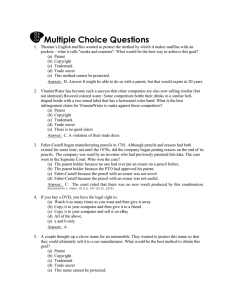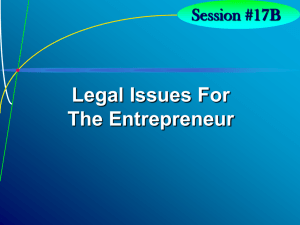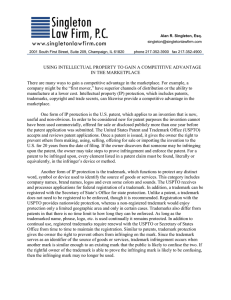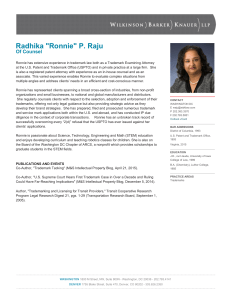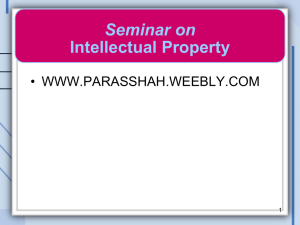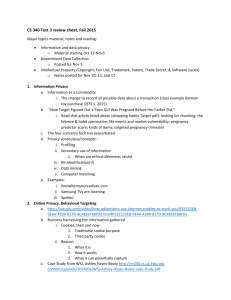An Entrepreneur`s Guide to Intellectual Property
advertisement
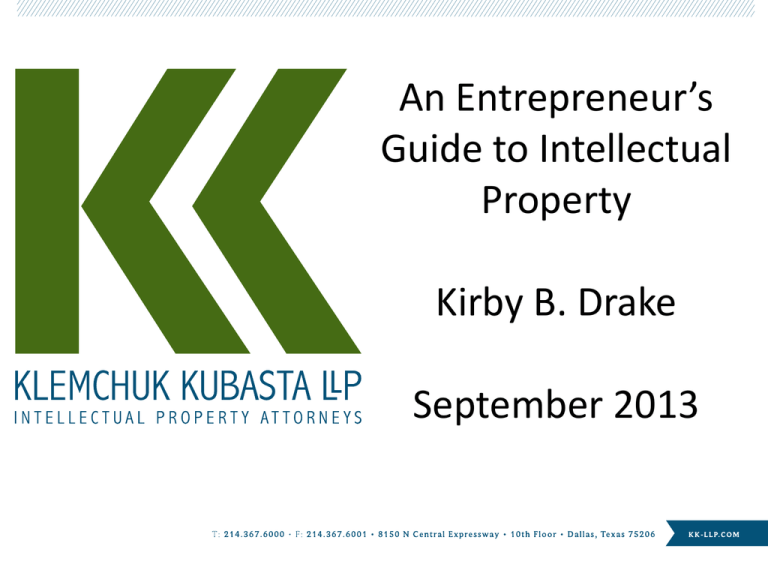
An Entrepreneur’s Guide to Intellectual Property Kirby B. Drake September 2013 PATENT BASICS • • • • • Invention must be new (novel) and not obvious Provisional vs. non-provisional applications Design vs. utility applications Patent term - up to 20 years (if fees are paid) Legal right to exclude MAKING USE OF A PATENT • Litigation • Licensing • Spinout or start-up business • Partnerships, joint ventures TRADE SECRET BASICS • • • Confidential information that gives a competitive advantage May protect processes, software, customer lists, pricing information, business methods, marketing plans Protection usually endures as long as kept secret PATENT AND TRADE SECRET OVERLAP • • New innovations may be protected with patents or trade secrets Cannot usually protect same innovation by both patents and trade secrets Patent? Trade Secret? Both? Neither? COPYRIGHT BASICS • • • Protects works of authorship that have been tangibly expressed Generally lasts for life of author plus 70 years Inherently created from the moment that work is created COPYRIGHT BASICS • • Exclusive right to reproduce work, prepare derivative works, distribute copies to the public, perform work publicly, display work publicly Person who creates work inherently owns copyright except for “work made for hire” COPYRIGHT USE AND MISUSE • Should place copyright notice in place where it can be immediately seen • Fair use Infringement – substantially similar test • TRADEMARK BASICS • • Word, phrase, symbol and/or design that identifies and distinguishes source of goods of one party from those of others Once registered, can be renewed indefinitely OR STRENGTH OF A TRADEMARK Strength Example Fanciful or arbitrary “Apple” for computers Suggestive “Glade” for air freshener Descriptive “Creamy” for yogurt Generic “Bicycle” in “The Bicycle Store” TRADEMARK SEARCH/REGISTRATION • • • Can do free searching of federal trademarks (Trademark Electronic Search System (TESS) available at http://tess2.uspto.gov/) If no federal trademark registration, others may still have rights at state level or at common law Trademarks using equivalent spellings or sounds may present problems IP SUCCESSES AND PITFALLS BEST PRACTICES IN IP



